|
| |
FAMILY COCCINELLIDAE
- This page contains information and pictures about Yellow Shouldered Ladybird Beetles
that we found in the Brisbane area, Queensland, Australia.
-
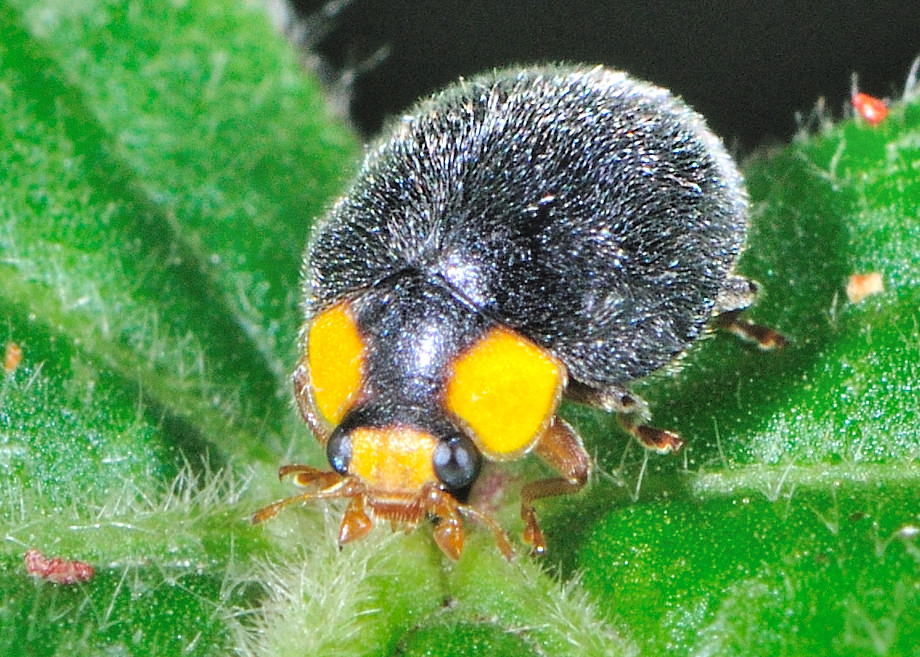 - Body length 4mm
-
- Yellow Shouldered Ladybird Beetles have a yellow dot on each side of their
thorax, some have a yellow face but some others have a dark face. All of them
have their forewings in dark blue colour and covered with fine yellowish to
white hairs. They are small in size.
-
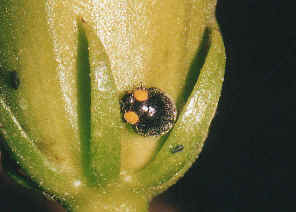 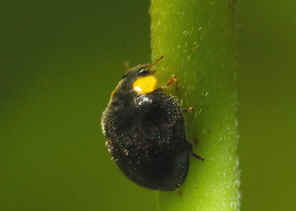
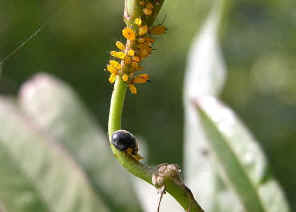 -
- The adults and larvae are predator of aphids. We usually find them near the
Cowpea Aphids
and Milkweed
Aphids. They seem not the interested on scale insects. Female
ladybirds are either feeding on aphids or looking for a place to lay eggs. They
lay a batch of eggs, about eight at a time, on the surface of a leaf. The
eggs are creamy yellow in colour.
-
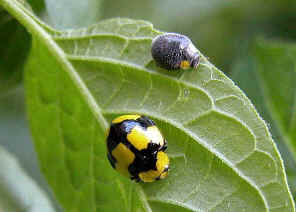
 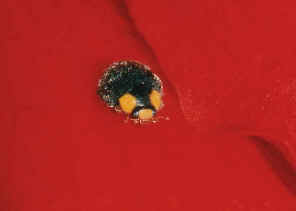 -
-
It is quite common to find different ladybird species on the same plants. In a
early summer day, we found totally there were eight species of ladybirds on a
small plant actively looking for prey.
-
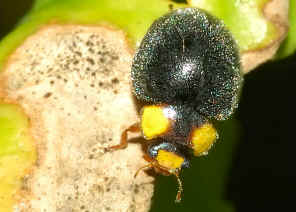 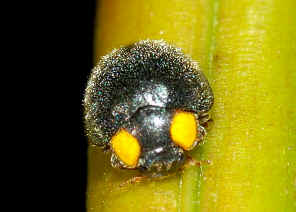
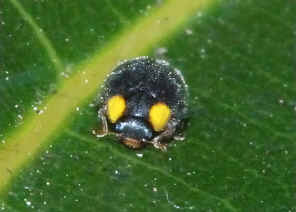 -
- Some of the adult ladybirds have the yellow face, some have green
face.
-
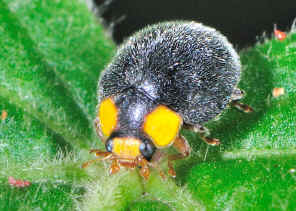 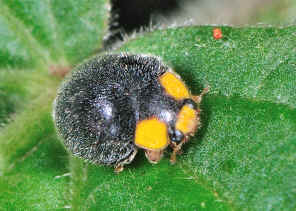
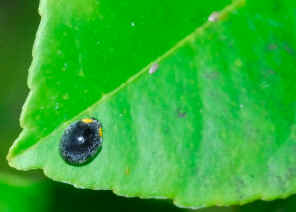 -
Larva
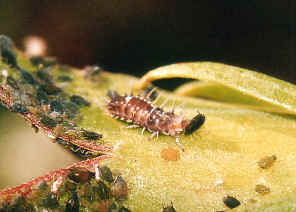 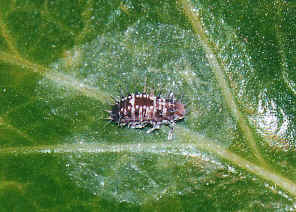 -
- The Yellow Shouldered Ladybird larvae have long sharp mandibles and is feeding on Cowpea Aphids. They are elongate and slightly oblong in shape.
They are adorned with spines.
-
-
The larvae takes about five minutes to consume a medium size aphid. When a aphid
is found, the ladybirds larvae bites the aphid on the top of its head. The aphid responses
with kicking but ladybird larvae does not worry at all. Then the aphid hold very tight at where it is sitting. The ladybirds
larvae starts kicking back to the aphid's legs and body while still biting its
head. A minute or so, the aphid stop moving and the ladybird larvae hold
it up, as showing in the above picture. The ladybird larvae sucks
the juice and the aphid's soft body collapses very quickly. After about five minutes, the
ladybird larvae drop the empty aphids shell and looks for another aphid. The
aphids near by seem do not notice or worry what is happening.
-
Pupa
- A ladybird larvae undergo four instars
before pupating. It takes about 10 days. A fully grown
larvae is about 10mm long. Before pupating, it find a suitable place, usually on
a leaf near the stem tip. The larvae then makes a circle
with waxy substance around itself, as shown in the above picture. Then the
larvae starts to turn into a pupa.
-
 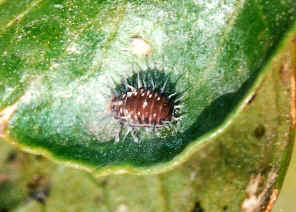 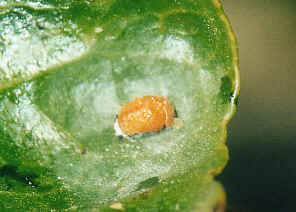 - Find a location for
pupate Attach to leaf
Just start pupation
-
- When the larva is fully grown, it finds a save place, usually on the a
leaf at the lower part of the plant for pupation.
-
-
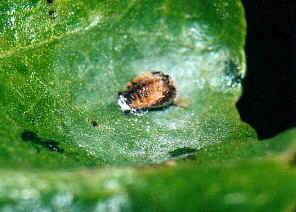 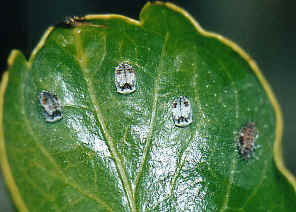 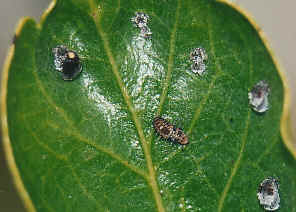
- Pupated an hour
Favorite pupate
site
A week later
-
- The about pictures show the sequence of pupating. After the last moulting,
the pupa is yellow in colour. It become darken after a few hours.
-
- Usually we find a number of ladybirds pupate in a favorites location. In
the about pictures, there were four pupa, one of them just started the pupating. About a week
later, they became ladybird adults. The second
pictures was taken a week later. Some more members joined the favorites site. Two
of them already hatched and gone. One just hatched and one new comer.
-
- Reference:
- 1. Australian Ladybird Beetles
(Coleoptera: Coccinellidae) Their biology and
classification - A.Ślipiński, Australian Biological Resources,
2007, p99.
- 2. Yellowshoulder
Ladybird - Biodiversity Database, The Cook Islands Natural
Heritage Trust, 2005.
[ Up ] [ Mealybug Ladybird ] [ Yellow Shouldered Ladybird ]
| |
|





















